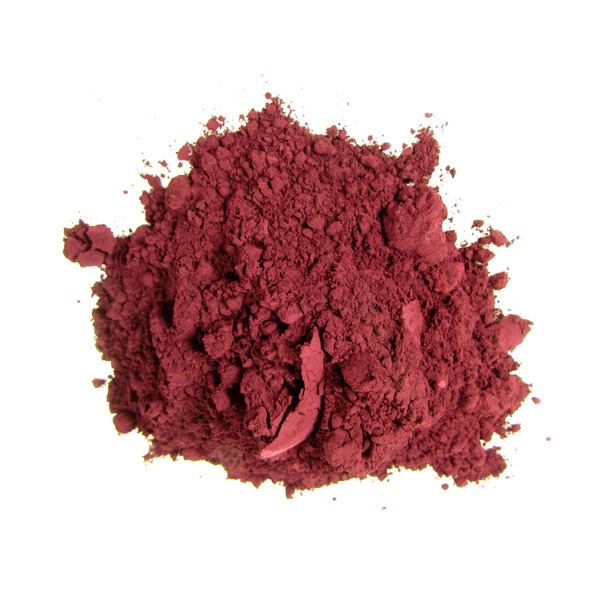
This week: Stop that excess dye from sitting on the surface of your fibers and rubbing off
We often get questions about crocking which is defined as when excess dye sits on the surface of fiber or yarn and comes off when rubbed. Natural dyes seem to share the majority of the blame when it comes to crocking, but any type of dye is susceptible to rub off whether it is synthetic or natural. Now that we know what it is, we all agree that it’s a bother.
Customers don’t like having their hands covered with dye while spinning or knitting from crocking fibers. It’s even worse when your armpits turn strange colors from a poorly dyed tee shirt. For dyers, crocking also means extra time spent rinsing and rinsing, which means more water use, over-handled fibers, or making up romantic explanations why your yarn is oozing color everywhere. There is help.
We’ve detailed some common causes of crocking below when dyeing with natural dye extracts and what you can do to minimize or eliminate the problem. From experience, the powders seem to crock more than liquid extracts: the new Aquarelles do not appear to have serious crocking issues.
Check these tips to reduce crocking.
1. Fiber should to be very clean. This means thoroughly scoured. Any manufacturing oils or softeners on the fiber will impede the mordant and dye take up. Use the appropriate cleanser for your fiber type.
2. If you reuse the alum mordant bath, watch for flakes and sediment. This is what alum does: it purifies by attaching to minerals in the water and forming a white flaky deposit. If this sediment gets on your fiber, it will rub off, taking color with it. If your reused alum mordant bath is showing flakes, it’s time for a fresh bath.
3. Rinse mordanted fiber before dyeing. This removes excess alum, which otherwise will bond with the dye floating in your dye water.
4. Thoroughly dissolve dyes before adding to the dye bath. This means wetting out the powder with lukewarm water and then adding enough boiling water to dissolve the powder so there are no lumps left. If you are having a problem getting your dye to dissolve, sometimes it needs to sit for a few minutes to loosen up. Really sticky dyes may need an overnight soak before they completely dissolve. If using weld extract (which is really expensive), and you see a lot of sediment, add 1/2 to 1 gram of soda ash to the weld solution and most of those gritty bits will dissolve. This also works with madder, but remember the addition of soda ash will create a very deep red shade. For orange shades, strain the dye bath instead.
5. Make sure to heat the fiber for the correct amount of time and temperature. Many dyes continue to strike (bond) throughout the entire heating and cooling down process. Some dyers feel that leaving the fibers in the dye pot during cool down also improves the takeup of color and reduces crocking.
6. For very deeply dyed fibers like dark madder red or rich logwood, reduce excessive rinsing by allowing the fibers to dry first (which could take a day or two). Then rinse. You should experience much less washout.
